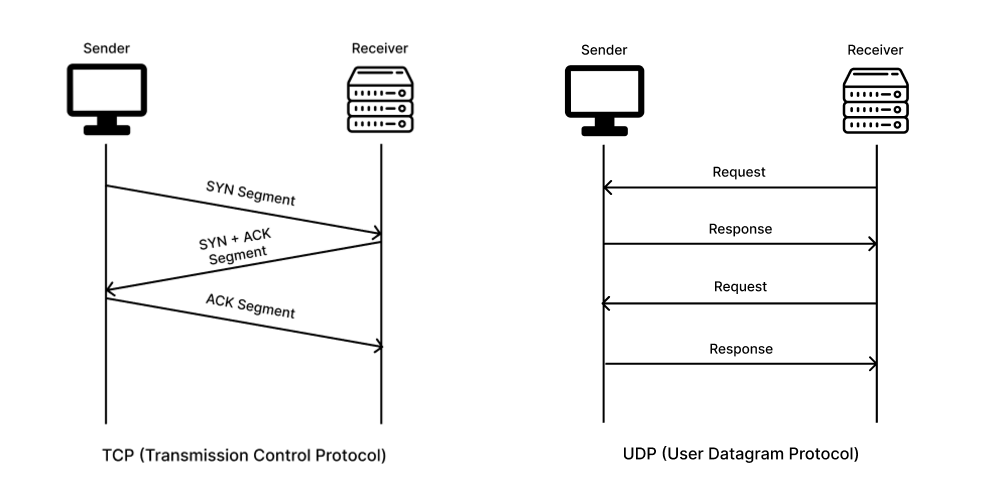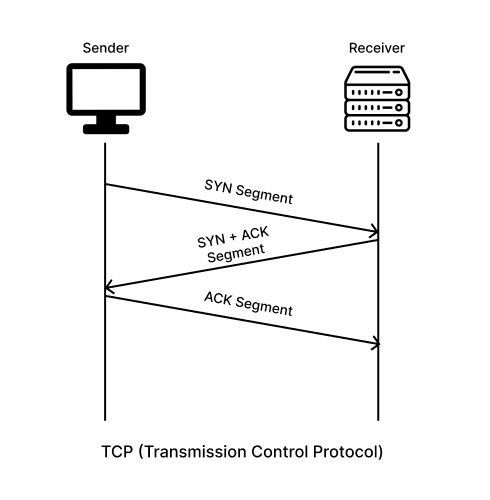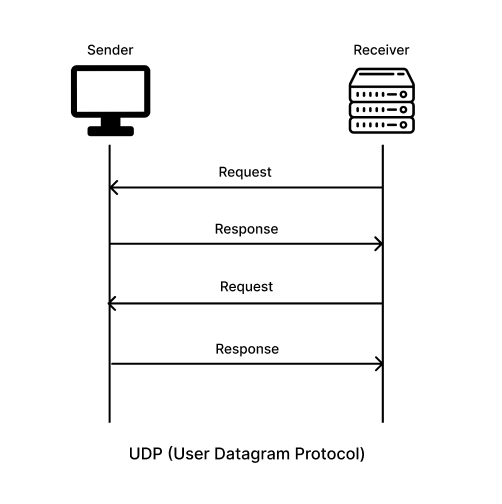TCP and UDP Explained: Understanding the Core Protocols of the Internet
 Smit Bhoraniya
Smit Bhoraniya
When it comes to communication over the internet, two fundamental protocols stand out: Transmission Control Protocol (TCP) and User Datagram Protocol (UDP). These protocols are the backbone of data transmission, enabling reliable and fast communication between devices on the internet. In this blog, we'll explore the differences between TCP and UDP, the reasons for using each protocol, and provide practical examples to illustrate their applications.
TCP (Transmission Control Protocol):
TCP is a connection-oriented protocol that ensures reliable data transmission between devices. It establishes a reliable and orderly data transfer channel before data exchange takes place. Here's why and when you should use TCP:
Reliability: TCP guarantees that data packets are delivered in the correct order without loss or duplication. It automatically retransmits lost packets, ensuring data integrity.
Example: Web Browsing When you access a website, your browser uses TCP to establish a connection with the web server. It then sends a series of TCP packets containing HTTP requests to retrieve the web page. The server responds by sending TCP packets containing the requested data. If any packets are lost during transmission, TCP will request retransmission, ensuring you receive the complete web page.

UDP (User Datagram Protocol):
UDP is a connectionless protocol that prioritizes speed and simplicity over reliability. It is ideal for applications where real-time communication is essential and occasional data loss is acceptable. Here's why and when you should use UDP:
Low Overhead: UDP has less protocol overhead, making it faster than TCP for time-sensitive applications.
Example: Online Gaming In online gaming, low latency is crucial for a smooth and responsive experience. Games often use UDP for transmitting real-time data such as player movements, positions, and actions. While some packets might be lost or arrive out of order, the overall experience is enhanced by the reduced latency, allowing players to react quickly to changes in the game environment.

Comparison:
Use Cases:
TCP: Web browsing, email, file transfer, reliable data delivery.
UDP: Online gaming, video streaming, real-time audio, VoIP.
Reliability:
TCP: Ensures reliable data transmission through acknowledgment and retransmission mechanisms.
UDP: This does not guarantee reliable data delivery; occasional packet loss is possible.
Overhead:
TCP: Higher protocol overhead due to connection establishment and error-checking mechanisms.
UDP: Lower protocol overhead, leading to faster transmission but less error-checking.
Conclusion:
TCP and UDP are both essential protocols in the world of networking, serving distinct purposes. TCP prioritizes reliability, making it suitable for applications that demand precise and error-free data delivery, like web browsing and file transfer. On the other hand, UDP emphasizes speed and low latency, making it ideal for real-time applications like online gaming and video streaming.
Understanding the strengths and weaknesses of each protocol allows you to make informed decisions when developing applications and services, ensuring optimal performance and user experience based on your specific needs.
Subscribe to my newsletter
Read articles from Smit Bhoraniya directly inside your inbox. Subscribe to the newsletter, and don't miss out.
Written by

Smit Bhoraniya
Smit Bhoraniya
I am a software engineer with a passion for creating innovative solutions to complex problems. With my expertise in coding and programming, I strive to develop software that not only meets the needs of users but also enhances their daily lives. I am excited to be part of this ever-evolving technological world, where possibilities are endless and innovation is key.